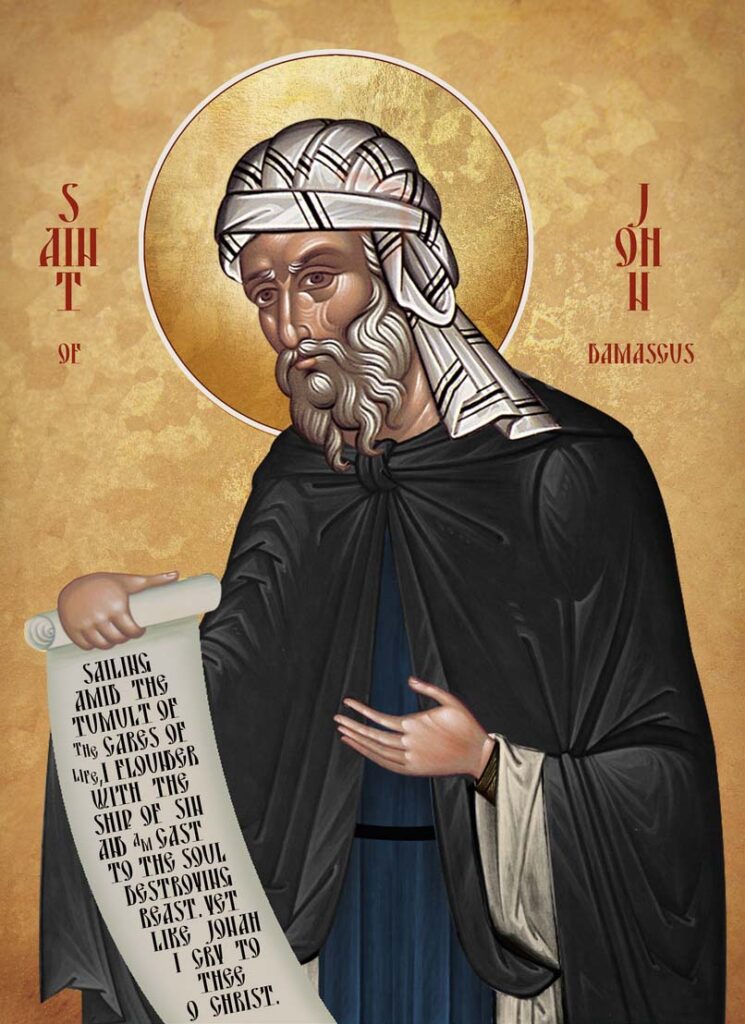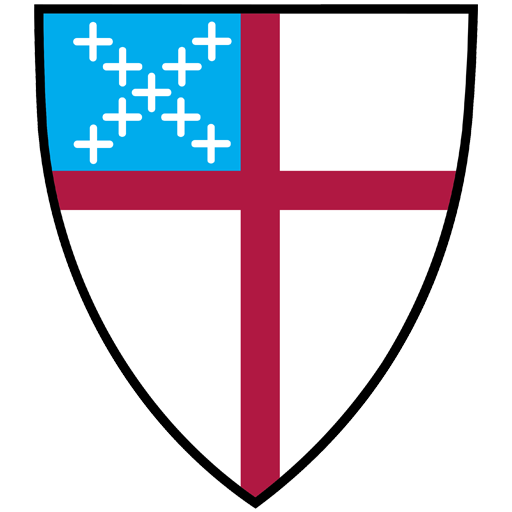December 4 (Lesser Feasts and Fasts 2000)

John of Damascus was the son of a Christian tax collector for the Muslim Caliph of Damascus. At an early age, he succeeded his father in this office. In about 715, he entered the monastery of St. Sabas near Jerusalem. There he devoted himself to an ascetic life and to the study of the Fathers.
In the same year that John was ordained priest, 726, the Byzantine Emperor Leo the Isaurian published his first edict against the Holy Images, which signaled the formal outbreak of the iconoclastic controversy. The edict forbade the veneration of sacred images, or icons, and ordered their destruction. In 729-730, John wrote three “Apologies [or Treatises] against the Iconoclasts and in Defense of the Holy Images.” He argued that such pictures were not idols, for they represented neither false gods nor even the true God in his divine nature; but only saints, or our Lord as man. He further distinguished between the respect, or veneration (proskynesis), that is properly paid to created beings, and the worship (latreia), that is properly given only to God. The iconoclast case rested, in part, upon the Monophysite heresy, which held that Christ had only one nature, and since that nature was divine, it would be improper to represent him by material substances such as wood and paint. The Monophysite heresy was condemned by the Council of Chalcedon in 451.
At issue also was the heresy of Manichaeism, which held that matter itself was essentially evil. In both of these heresies, John maintained, the Lord’s incarnation was rejected. The Seventh Ecumenical Council, in 787, decreed that crosses, icons, the book of the Gospels, and other sacred objects were to receive reverence or veneration, expressed by alutations, incense, and lights, because the honor paid to them passed on to that which they represented. True worship (latreia), however, was due to God alone.
John also wrote a great synthesis of theology, The Fount of Knowledge, of which the last part, “On the Orthodox Faith,” is best known.
To Anglicans, John is best known as the author of the Easter hymns, “Thou hallowed chosen morn of praise,” “Come, ye faithful, raise the strain,” and “The day of resurrection.”
